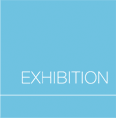|
Cloth & Culture NOW
the artists - Merja Winqvist, Finland
During my childhood in the 1950s, the
vast majority of Finns lived in the countryside. At that time,
people in the country still largely lived in what was virtually
a nature culture, with buildings, implements and food made and
produced almost entirely self-sufficiently. Knowledge and craft
skills were passed down from generation to generation. I spent
my early childhood in the country, and it was at that time that
I became familiar with the different forms of the natural economy – farming, hunting and fishing, domestic animals,
handicrafts – along with nature, and all the rest – the
trees and plants, the lakes and rivers, the birds, the fish and
other animals. At home almost everything, from furniture to home
textiles, was made by hand. It was these childhood experiences
that left in the back of my mind, in my unconscious, the moods
and motifs that I have worked on in my art.
Against this background I naturally found
myself studying textile art and environmental design at the University
of Art and Design Helsinki. I developed an interest in the aboriginal
cultures of other countries. I found the same forms and structures
in Africa, and in America and Asia. The furnishings and fittings
and the living systems that people have created resemble each
other everywhere, and have been refined according to their purpose
to suit the local materials and sources of livelihood. Function
has shaped our concept of beauty – what’s good is
beautiful. This has generally been the starting point for the
work of Finnish architects and designers. In the latter half
of the 1950s, it was the public buildings and industrially produced
furniture and utensils in the home that brought the trend for
functionalism to the attention of ordinary Finns.
For example, people could buy stylish, clean-lined, practical
crockery from country-village co-operative shops, objects that
are now classics and rare collectables, or they could conduct their
business in modern, well-lit town halls or libraries designed to
be on a human scale.
In my own work I have applied the ideal of
functionalism by simplifying the forms as much as possible, while
avoiding unnecessary decoration. The parts of the work that look
like decoration have an important functional significance in terms
of the cohesion and durability of the sculpture.
I frequently simplify the idea and theme of an artwork so as to
invest it with symbolic value. For example, the boat motif derives
from the old Finnish way of life and mythology. The Tuonela, the
river of death, is crossed in a boat to reach the afterworld. In
ancient Egypt, too, the dead person was equipped for the final
journey with a boat or pictures of boats. This theme has several
parallels nowadays, too, such as business life and in the overcoming
of difficulties. Meanwhile, in many cultures the circle of the
sun symbolises life energy and divinity, and the horn sexuality
and fertility, as does the snake, which again in China is a mark
of the secret and shameful. The egg in Christian symbolism depicts
grace and the possibility of a new life. My work on the theme of
meadows is based on the Chinese ideogram for meadow.
The main material for my work is unbleached paper, which I twist
with glue into pipe-like sticks reminiscent of wood. I join these
small bits together with tightly knotted thread. The brown kraft
paper that I use does not contain bleaching agents that would make
the fibres brittle and it looks like a natural material.
Paper was used in post-war Finland, during
the recession of the 1940s, as an ersatz material, as a substitute
for textile materials. It was spun into yarn or treated to make
it softer. From my childhood I remember the paper sheets in train
sleeping carriages, and the paper string and other packaging
supplies in shops. My parents told me about worn-out wooden-soled
paper shoes, about curtains and frock cloth woven out of paper
fibre. It was then that viscose fibre from spruce trees began
to be developed in Finland, initially to replace textile fibres.
It is said that Finns live off paper, and the paper industry
has been and still is Finland’s biggest
industrial sector.
I base my works on structure. For twenty
years, I have been investigating the internal tensions inside
forms, and the way that the smallest possible amount of material
will give rise to the most compact and enduring form. I am interested
in the structures of plants and animals, in which durability
is based on form and not on mass – in
tissues and crystals, straws, leaves, skeletons, eggshells and
so on. I leave the internal structures in my sculptures visible.
We often come across the same form language in Finnish traditional
log-building, and in contemporary architecture, too – with
the bearing structures and joints left visible as part of the overall
look of the building, as if to speak of their function and to create
tension and rhythm in the space.
When I have put on exhibitions in different
countries and continents, I have received positive feedback in
comments to the same effect, regardless of the culture. This
makes me glad – I feel I
have succeeded in awakening memories in all nations of times when
people lived more primitively on nature’s own terms, and
with respect for it. My art has evoked mental images of people’s
direct effect on the rest of nature.
FINLAND
|









